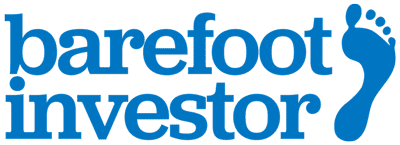Flattening the Financial Crisis Curve
You may think Australia has flattened the curve.
You are wrong.
While we obsessively track the curve of COVID infections, there’s another dangerous curve that’s just beginning:
The Financial Crisis Curve.
Make no bones about it: we are at the start of a very, very steep curve.
And when we reach our peak rate of infections -- in, my best guess, five months -- it could be financially devastating.
Like all curves, there are three phases.
Let me explain:
The Start (Now)
The other day I asked my boss at Anglicare Financial Counselling how busy we are in light of the Corona Crisis.
Her response floored me:
“Truth be told, we’re no busier than usual ... it hasn’t really hit yet.”
Huh?!
It’s true.
Given we’re at the start of the curve, a lot of people aren’t feeling many (financial) symptoms … yet.
In fact, many of my harder-up clients are making more money now than before the pandemic hit.
The rate of JobSeeker (formerly known as Newstart) has been temporarily doubled. And they’ve been given two $750 cash payments.
And those who’ve been stood down are getting the new JobKeeper payments of $1,500 a fortnight (including part-timers).
And almost everyone I speak to is planning on taking $20,000 tax free from their super over the next few months.
(Despite my protests!)
Even their house payments are cheaper now:
Rent is now negotiable. And if they have a mortgage, well, that’s negotiable too.
The banks have warmly embraced the narrative that they are the ‘financial doctors’ of this economic crisis, and they’ve been handing out mortgage pauses — but not interest rate pauses — like Pauline Hanson hands out how-to-vote cards on election day (lots of colourful drawings, not a lot of words).
Of course, there are many people who are stressed and struggling. It’s just that, as financial counsellors, we’re not seeing them yet (though that may be because they’re locked up in their houses trying to homeschool their kids).
Cast your memory back to when Scomo was weighing up whether he’d go to the footy one last time … that’s the stage of the financial crisis curve we’re at now.
The Climb (Approaching Soon)
We’re about to start coming out of lockdown.
Investors have been waiting excitedly for this day, for the last month.
Having initially panicked and seen the market drop by a third last month, they’ve ‘shaken it off’ like Taylor.
The US market has had a swift bounce, soaring 20% on the hope that things will get back to normal in no time.
Well, that’s one theory, which Donald Trump certainly wants you to believe (it is an election year after all).
Another theory is that the reopening of the economy will likely be slow, as we all watch out for sniffles ... the dreaded second wave of the virus. Continued social distancing and travel restrictions will become the new normal.
Most businesses won’t snap back and re-employ all their workers. Instead, they’ll likely move gingerly and re-employ just a small number of people.
In the best case, workers will be back to the same hours with no pay increase for a long time. More likely, though, their hours will be reduced … or, in the worst case, they’ll lose their job.
And then comes …
The Peak (5 months’ time)
By now we all know what happens at the peak of the curve:
With the coronavirus it’s when the hospital system cannot cope. With a financial crisis, it’s when unemployment peaks -- and that’s when the economy falls into a deep recession.
But it gets worse: see, this is also when the Government has said it will switch off JobKeeper, and cut the JobSeeker supplement back to half.
And with an economy in recession, the banks — our self-proclaimed ‘financial doctors’ — may lose their gentle bedside manner and start flicking off the financial life support for many people and businesses.
Depressed yet?
Flattening The Curve
Of course, this is just one scenario I’m painting, and it hopefully won’t turn out this bad.
Besides, as we’ve seen with COVID, when we collectively listen to scientists instead of grumpy old men like Gerry Harvey (who — let’s be honest — just wants you to spend your coronabucks at his chop shop), we can bend the curve to our advantage.
And I truly hope we do.
Yet my boss at the financial counselling agency reminded me of one thing:
“Remember, Scott, before coronavirus, the average wait to see a financial counsellor was three to six months ...
Imagine what it will be like in a few months’ time!”
Tread Your Own Path!
